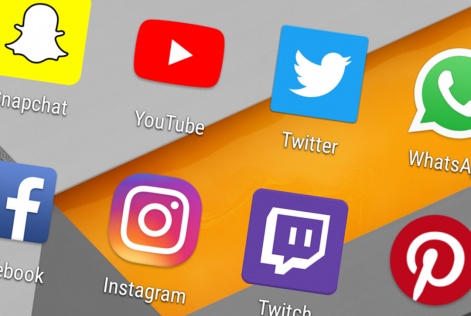Mark Wright is CRO of Influencer.
So, we are here again. Like the industry knight in shining armour, Influencer, here to defend an avalanche of criticism sent from a peak of the ever growing, disillusioned, trade press mountain.
Back in June we were discussing Keith Weed’s comments and his fear of fraudulent activity within our fledgling industry. Today we read of J&J missing the target somewhat with their recent Listerine mouth wash influencer campaign.
Over the course of the past few months, since Keith Weed’s comments in Cannes, we have heard many ‘industry experts’ speak of their disdain towards influencer marketing and question the worth of our very being.
Mark Ritson, a commentator at Marketing Week who seems to have made a living from negativity, recently spoke about ‘how influencers made my arse a work of art’ and within this sometimes witty, but mainly badly researched, article discussed the ‘5 circles of bullsh*t’ that we apparently trade off. The flack has been coming at us like a fighter jet in a war zone.
Mindless self indulgence
What we have noticed at Influencer is that throughout many of these articles there is an utter disregard for any counter arguments or comment from our side at all. Not once are we, and I assume our colleagues at other influencer businesses, contacted for quote or discussion.
There are no facts or figures included in most and all of it has a very distinctive air of sour grapes. Written by those that have plied a trade in traditional media backgrounds and have little or no understanding of how influencer marketing works, or indeed thrives, today.
Let’s first approach the recent Listerine criticism. Yes, it’s pretty cheesy and has an air of self-indulgence. Given that the various posts from different creators hired for this campaign are extremely similar in style, isn’t this the fault of the advertiser or agency and their brief rather than the influencer that followed it?
Fuck off this is anybody's normal morning.
— Nathan (@hintofsarcasm) August 31, 2018
Instagram is a ridiculous lie factory made to make us all feel inadequate. pic.twitter.com/arV7uCusiJ
There are many posts from many creators in our industry like this. As one of the leading companies in the influencer marketing industry, Influencer sees briefs come in like this daily. Is it really any different in traditional media? Is everything produced by creative agencies for advertisers on say TV any less cringeworthy? How many times have we viewed a TV ad and gone, “Jesus who writes this sh*t?”
We can even go one step further and look at a more recently perceived upstart, digital display. How much dross do we see on every web page we look at? Perhaps this is why engagement levels tend to be around the .02 per cent mark for banner ads in the UK across most big publishers. The fact is, there is good advertising and bad advertising. Just as there has always been. For all the Guinness ads in the offing there is a Wonga one. This is nothing new.
All publicity is... bad publicity?
There has been a lot unnecessary abuse sent directly to the main influencer via her Instagram account, something we as an industry shouldn’t condone.
I wonder how much abuse some of our TV, radio or press ads would receive if there was a direct message facility attached to the ads themselves? Quite a bit over the years I feel. So, do we attach the old adage of ‘all publicity is good publicity’ to this? Perhaps. After all, what the client has clearly sought through this ad is engagement and that has definitely been attained.

But, what we need to do as an industry is look at the wider issues this ad has highlighted and that, Influencer feels, is a greater understanding of what the influencer market can achieve for advertisers and how best to achieve results, with the use of quality content.
Those of us that have spent the majority of our lives in digital media are very familiar with the once buzz phrase, ‘the marketing funnel’. From engagement through to purchase, in the world of digital display an advertiser could see a user journey from start to finish. Great for many customers for many different reasons.
The fact is though, and this is where our negative commentators need to take note, we are not professing to be a replication of this tried and tested system. We know we are not. This is not what this market is trying to achieve. We know our worth, and as I’ve mentioned the marketing funnel I’ll stick with it, we are most effective for an advertiser’s upper funnel needs, plain and simple, to attract a user’s engagement.
Priority engagement
To see where we win out you only have to look at the engagement rates on offer. On average we see 5.7 per cent across the whole influencer marketing industry compared to say, Instagram ads engagement of closer to 2 per cent and as mentioned earlier digital display of a paltry .02 per cent (Business Insider Influence Marketing Report, 2018).
Users are clearly more comfortable engaging with a brand that is being posted by someone they have decided to follow. They trust their judgement, similar to a method we have all agreed for some time as being the holy grail for advertisers ‘word of mouth’. There is no better advertising than that, right?
Advertisers want to get people talking about their brand and influencer marketing does this in spades, the only difference being that they discuss it online.
Advertisers want to get people talking about their brand and influencer marketing does this in spades, the only difference being that they discuss it online. Of course, there are some bad posts around, just like there are poor ads in the many forms of traditional media out there.
I don’t think this problem is indicative of influencer marketeers; it’s the media industry as a whole. The sooner some of our detractors realise this, the better.
We are fundamentally aware that the spotlight is firmly on our industry. From influencer fraud to less than perfect content. At Influencer, we have built a business from the ground up by employing people who have a genuine love of the industry, including many senior members of the business who are influencers themselves.
We take pride in our approach of education and guidance and only authorise the very best of creators to produce the very best of content with most of our engagement levels far outreaching the 5.7 per cent industry engagement average. We are also leading the way with many initiatives in influencer fraud and our methods are seen as market leading, as they have been proved time and again to work, with a full portfolio of successful campaigns and happy customers behind us.
We will continue in this vain and are confident of the latest predictions that by 2022 our industry will be worth $10b showing a growth rate of 38 per cent year on year (Business Insider Influence Marketing Report, 2018). Regardless of what Mark Ritson and others think, we must be doing something right!















